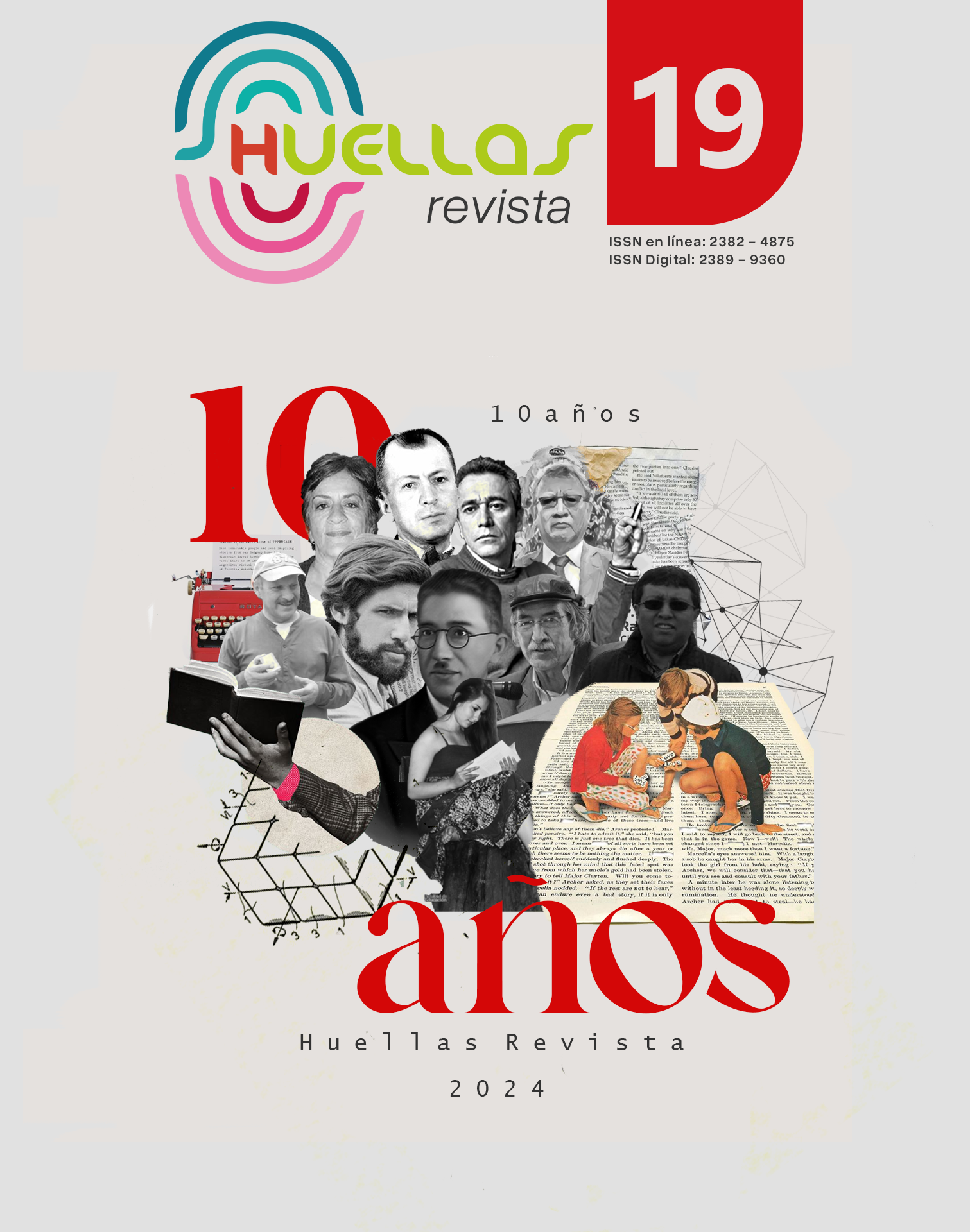El método de inglés con propósitos específicos para el diseño de materiales en la comprensión de lectura en la educación superior
DOI:
https://doi.org/10.22267/huellas.2024101.6Keywords:
English for Specific Purposes (ESP), reading comprehension ih the field of higher education, materials designAbstract
This paper is the result of an educational experience that exhibits the difficulty that students of higher education from different professional profiles are having in terms of English reading comprehension. Thus, it reflects the lack of vocabulary and the shortcomings to remember grammatical structures in the foreign language.
Considering, the above mentioned undergraduate student’s difficulties, this study took as a sample, learners of Occupational Health and Safety Administration learning program, at Corporación Universitaria Minuto de Dios. Then, a qualitative research was selected, founded on English for Specific Purposes approach (ESP) (Hutchinson & Waters, 1987, p. 9) by applying the focus group technique based on observation, interviews and surveys. In order to promote technical vocabulary and expressions learning in English, besides through reading practice the communicative goals must be taken into a consideration to improve reading comprehension.
Additionally, by means of the ESP approach this research project is aimed to encourage the design of own materials, which will enhance motivation in the process of acquiring a foreign language. Then, the context and its characteristics, as well as specific content and objectives must be settled down after making process of reflection and constant evaluation.
Finally, it is assumed that the proper reading exercise requires language and its skills, which leads to an interactive process of creating meaning and also serves as an organizing principle of text structures, an important fact in learning English as Foreign language.
Downloads
References
Astrid Lissette Cativo de Cornejo, A.L.(s.f). La Importancia
del Idioma Inglés para Propósitos Específicos. Escuela
Especializada en Ingeniería ITCA- FEPADE REVISTA
TECNOLÓGICA Volumen 7, N 1. Recuperado de http://
www.redicces.org.sv/jspui/bitstream/10972/2546/
/CAP%2011.pdf
Andrés Espinoza, A. A., Veas, C. P., Gómez, P. I.,
Romero, M (2019). Inglés para fines específicos para el
fortalecimiento de la empleabilidad en estudiantes de
educación media técnico profesional en Chile.
Universidad Católica de la Santisima Concepción.
Revista de Estudios y Experiencias en Educación, vol.
, núm. 36, pp. 15-34, 2019. Recuperado de https://
www.redalyc.org/journal/2431/243158860001/
html/
Evans, T.D., Saint John, M. (1998) Developments in
English for specific purposes – A multidisciplinary
approach. Cambridge University Press. Recuperado de
https://books.google.com.co/books?id=FY5ChNRKtx
wC&printsec=frontcover&hl=es&source=gbs_ge_sum
mary_r&cad=0#v=onepage&q&f=true
De Mejía, A. M., & Fonseca, L. (2006). Lineamientos
para políticas bilingües y multilingües nacionales en
contextos educativos lingüísticos mayoritarios en
Colombia. Universidad de los Andes, Bogotá.
Ibañez O, R. (2007) Comprensión de textos
disciplinares escritos en inglés. RLA, Revista de
Lingüística Teórica y Aplicada, 45 (1), I Sem. 2007, pp.
-85. Recuperado de
https://scielo.conicyt.cl/scielo.php?pid=S07184883200
&script=sci_arttext
Hutchinson, T., Waters, A. (1987) English for specific
purposes – A learning centred approach. Recuperado de
https://www.researchgate.net/publication/343537796_
English_for_Specific_Purposes ISSN-e 2248-6941,
ISSN 0121-6538, Vol. 13, Nº. 20. Recuperado de https://
dialnet.unirioja.es/servlet/articulo?codigo=612
Downloads
Published
Versions
- 2024-08-20 (2)
- 2024-06-07 (1)



